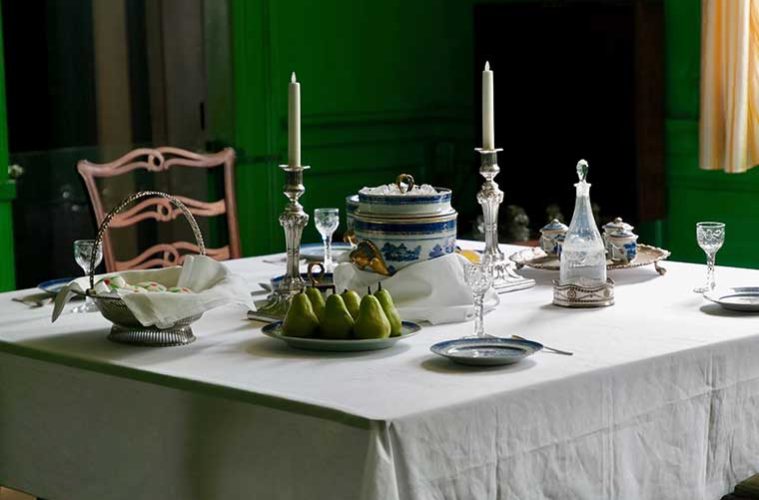The days of formal dining are fewer and farther between than in earlier centuries, but there are still times when you could find yourself with a veritable armoury of cutlery to get through. Outside in is a pretty good maxim, but here’s a quick guide to knowing your knives and familiarising yourself with forks.
Regardless of your dominant hand preference, formal table settings will have forks to the left and knives to the right with some minor exceptions. Glasses will be placed behind and to the right of your plate and sized largest innermost. To avoid embarrassment when dining, the big glass is for water, the middle for red and the smallest for white. Don’t raise your glass to be filled either.
On the left of your plate, working from the outside in: fish fork, dinner fork and salad fork. If there’s no fish, then your salad fork may be on the outside.
On the right of your plate, again working outside in: oyster fork, soup spoon, tea spoon, fish knife, dinner knife and salad knife. Don’t make the mistake of using one of your knives for your butter (your bread knife will already be placed on a side plate above and to the left of your forks) or you’ll be left with a small fork for your entree.
Oyster forks are usually three-tined and actually shouldn’t be included in formal dining, just to confuse matters. Fish knives are flat bladed and blunt with a distinctive shape at the tip, so that they don’t damage tender flesh. Knives will be turned blade-in so you don’t alienate your immediate neighbour.
At the top of your plate, working away from it, are your dessert fork and spoon and sometimes a cheese knife above those.
You will use a napkin, not a serviette, and this should be placed across your lap, not tucked into your collar. Nor should it be used to wipe your nose, merely blot your lips as required. If you’re dining formally, it is polite to wait until your hostess unfolds her own napkin.
If you wish to indicate you’ve finished eating in the west, place your knife and fork side-by-side at a slight diagonal, with the knife outermost and blade facing in and tines up. This will alert your waiter that you have finished eating and that your plate may be cleared. If you’re dining on the continent, it’s the same position with tines down.
If you’re asked to pass the salt or pepper, pass them together, and manners dictate that you taste the food before adjusting the seasoning, so that you don’t offend your host.
Eat your soup by tipping the bowl away from you and skimming your spoon in the same direction. Practically speaking, it minimises drips and splashes, but it does also look extremely elegant.
It’s a lot to remember so outside in really does help. Even if all else fails, just don’t speak with your mouth full!
For more tips on formal dining have a read of our Eight Beautiful Edible Flowers.

